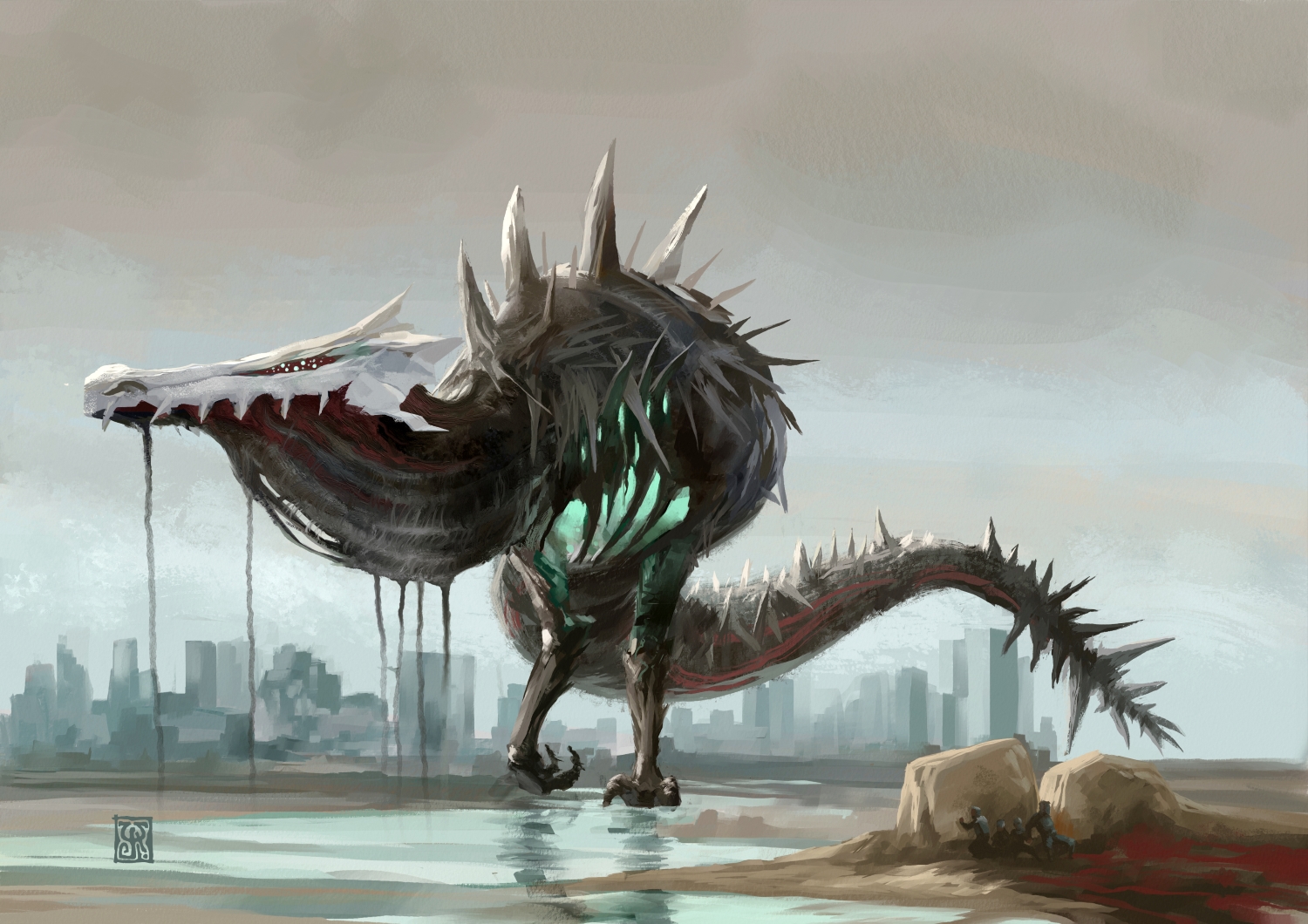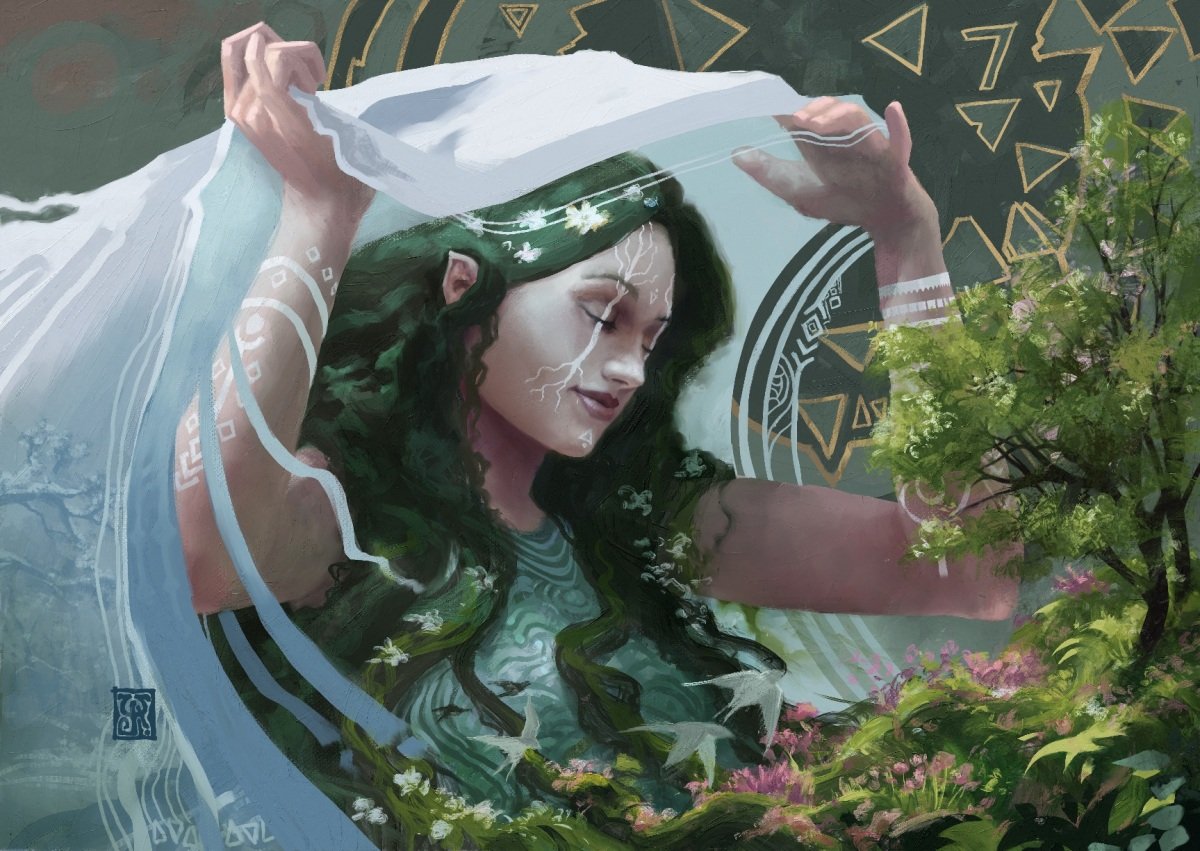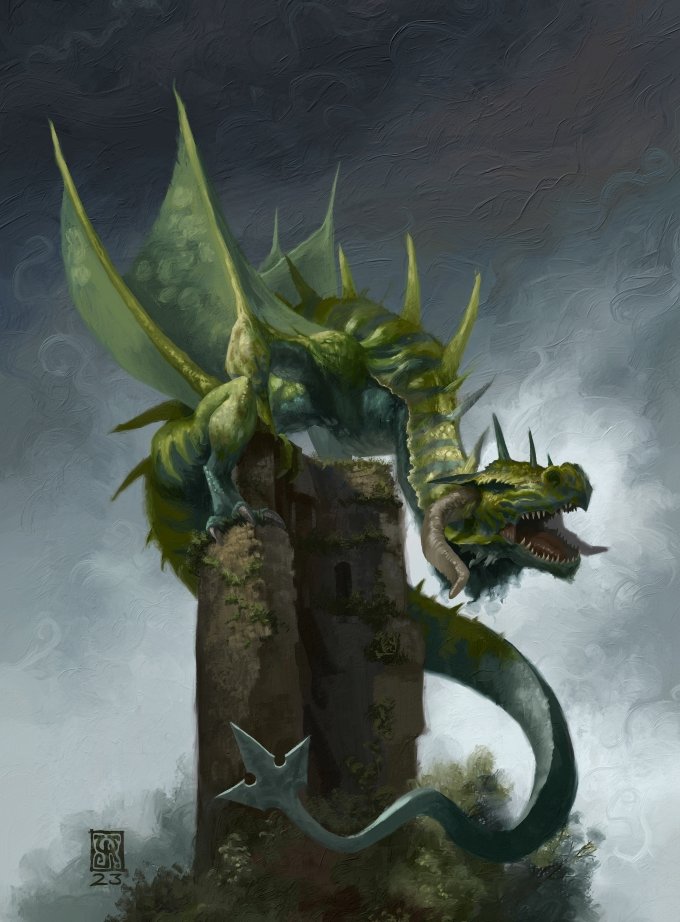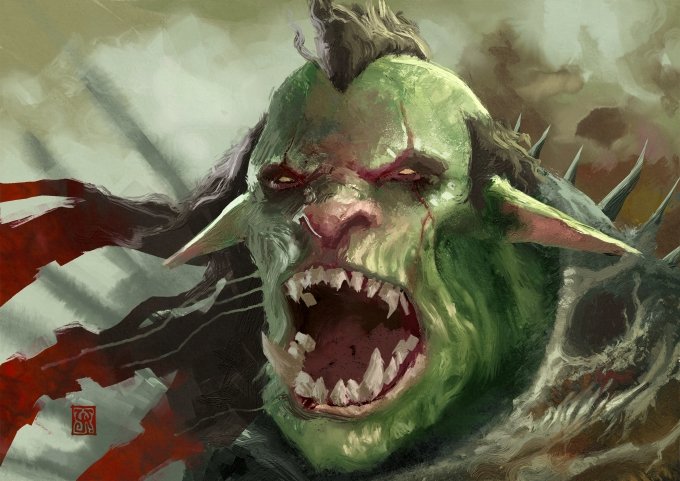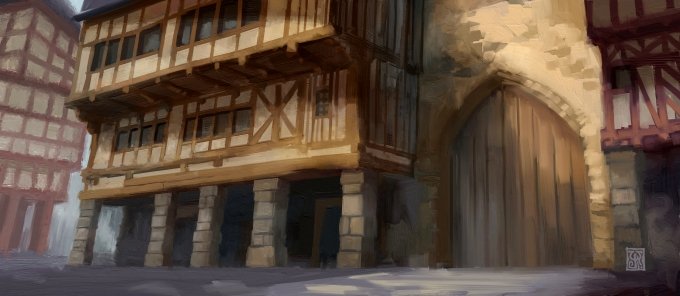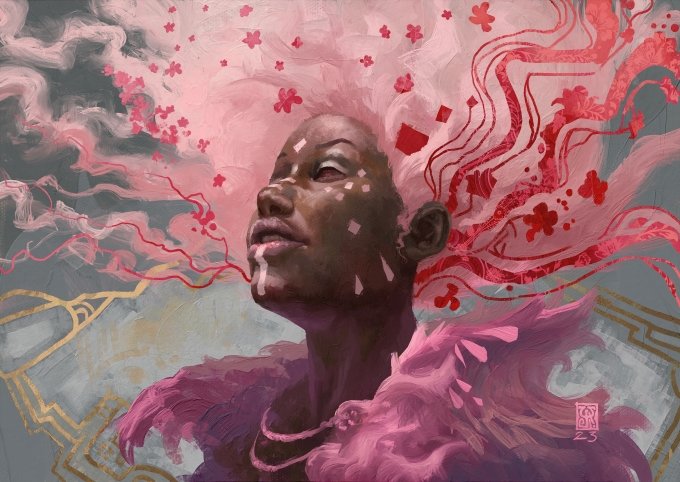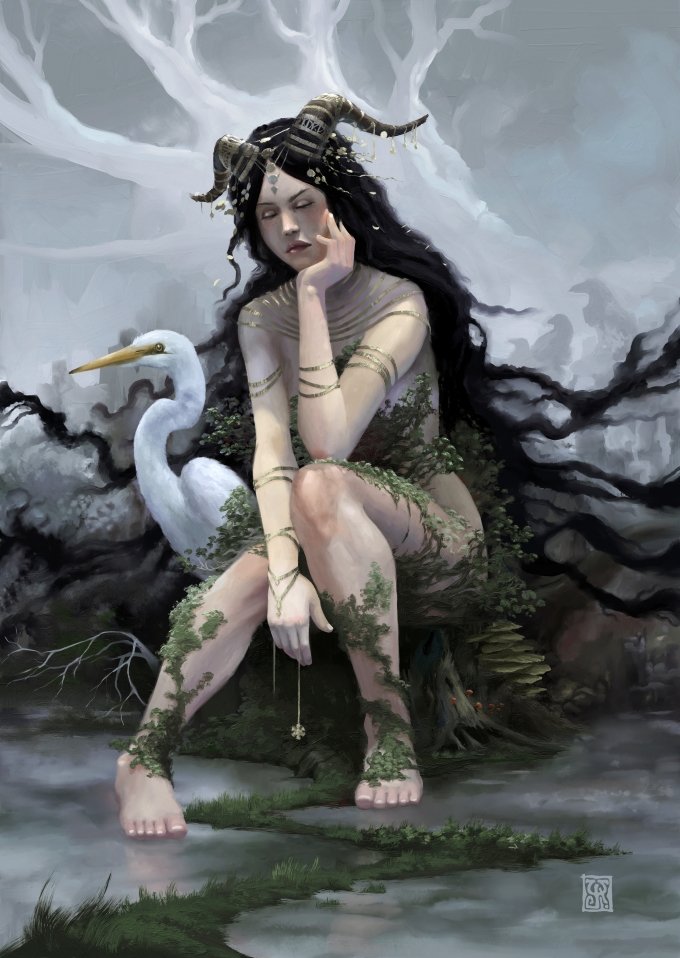Let us introduce one of the Rebelle Featured Artists, a French illustrator Yoann Petitbon. Walk the memory lane with us and see how working in different art fields influenced his work, shaped his art style, and helped him become the person he is now.

Yoann Petitbon, also known as Rekyua, is an illustrator based in France. He started drawing as a kid, later studied animation and 3D, and then worked for some time in industrial real-time 3D and later in historical street theater companies. Drawing was still an important part during that time, and Yoann began painting more, mostly creating spectacles props, backgrounds, etc. After that, he moved to the country and started training and painting personal works, inspired by nature’s color, medieval times, and fantasy for the most part. He loves color mixing and interactions between all elements in Rebelle. He finds it as a playground with a lot to explore.
"What influenced me a lot from early childhood was fantasy illustration, particularly the very elaborate paintings in the role-playing games of the 2000s. Fantasy is still one of my favourite themes, but over time I've discovered other styles and I'm also very fond of loose almost abstract images."
As someone who has tried various artistic paths, drawing your whole life, studying animation and 3D, and later transferring to illustration, what benefits do you see in dipping your toes or even diving into various art forms?
On a technical level, I think that anything to do with volume (sculpture, 3D, etc.) can be interesting. 3D in particular is a very practical tool for creating virtual models of objects and scenes, for testing lighting, etc. It's full of possibilities and quite easy to access for basic use.
I've also found the graphics and layout interesting in my approach to images. It requires you to think about the place for the title, text, logos, or the hierarchy of information and how it all fits into the image.
How would you describe your current art style?
This is a difficult question. In evolution? What influenced me a lot from early childhood was fantasy illustration, particularly the very elaborate paintings in the role-playing games of the 2000s. Fantasy is still one of my favourite themes, but over time I've discovered other styles and I'm also very fond of loose almost abstract images. There's always a tension between these two poles, even if I tend more often towards more elaborate images. At the moment, I'm experimenting a lot with more rapid/relaxed images to see if I can find a balance between the two.
Currently, I'm working on a children's book, which is making me rework my style and think about a lot of issues. In particular, how far can you simplify an image to make it more accessible without losing too much information? That's what interested me about Rebelle, the choice of very different tools that allow you to multiply the approaches to an image.
As a French artist and citizen, you can witness the artistic legacy of great masters everywhere you look. From the spectacular monuments and buildings on the streets, galleries, or museums… Is there an artist you look up to? Whether for their technique, discipline, recognition, or just an artsy lifestyle.
There are so many! As I mentioned earlier, when I was younger I was very influenced by fantasy illustrators, but also by comic books and manga. Then as I got older, I discovered Victorian painting, then classical painting, then more contemporary art, and so on.
The older I get, the more I'm interested in different styles. If I had to name something, it would be collective works: Guilty Gear Xrd and Spider-Man: Into the Spider-Verse (and their sequels), both for their very intelligent and creative approach to the use of 3D. Although they are two different media (a video game and an animated film) and two very different approaches to 3D, they both share the same determination not to get bogged down in the race for the most realistic rendering. Instead, they've subordinated the software to their creative intent and the result is unique. It produces visually interesting creations where you feel more the work of the artists than that of the computer. It's a good reminder, for me, that there are always creative and interesting ways of using tools, whatever they are :)
"I'm working on a children's book, which is making me rework my style and think about a lot of issues. That's what interested me about Rebelle, the choice of very different tools that allow you to multiply the approaches to an image."
Interestingly, you became a part of historical street theater companies after your studies. Could you tell us more about this period of life and how this adventure influenced your later creative work?
When I was young, my friends and I made LARP swords, just to fight each other. A few years later, we said to ourselves: "Hey, why not learn how to use them rather than just flailing them around? So we joined a stage fencing club, which was the only medieval fencing teaching place near us. Although it wasn't our original aim, we quickly got a taste for the show side of things. We met people who helped us progress quite quickly and one thing led to another and we found ourselves performing with an amateur troupe, then working regularly with a professional troupe, and finally founding our own.
As far as the creative side of things is concerned, it mainly involved working on graphics and web design, to create communication tools for the company. It also gave me a taste for historical illustration and the quest for accuracy in detail, costumes, and so on.
It was also my first attempt at a small sound and light show, with images edited into video and then projected onto the set to serve the different scenes. A few years later, I had the opportunity to do this kind of project again on a much larger scale. It's a very interesting experience to create images for a show. There's a very different rhythm between the sequences, where the stage can go from almost empty to filled with 200 people. This means trying to predict where the spectator's gaze is going to land, at what point we make simple images that just set the scene, to support the action without distracting attention, and at what point the screen can become the audience's focal point and be more animated.
For the project I worked on this year, Rebelle was very useful in making these images, 'special effects', animations, and transitions with the watercolour liquid simulation and the integrated time-lapse tool which is very practical.
Did your art name "Rekyua" come from the period of street theater performances? Or is there another story behind it?
The art name comes from video games, which I was very fond of when I was young, and even still am now. In particular, all the creativity you find in indie games and pixel art. To be more precise, it comes from the Panzer Dragoon Saga, which made a big impression on me, equally for the graphics, the music, and the setting.
Let’s take a better look at your recent Rebelle paintings. What part of a picture do you put the most effort into?
In general, colours. I try to find beautiful harmonies. But then this can vary from image to image. There's also everything else to manage: values, composition, volumes, etc.
For example, for the children's book, the story takes place on the beach in winter, so the colours will play a very important part in conveying that feeling of winter. However, as the weather is very changeable, I'd like to manage different moods while maintaining harmony between the scenes.
However, the way the text is arranged, the way the image is read after the text, and the flow between pages will also be a major focus of attention.
How long does it take for you to finish an illustration? Do you work on multiple projects simultaneously or focus on just one at a time?
It varies a lot. It can range from 5-10 hours to 60+ hours. I've done a lot of work over the last year on streamlining my work process, to sequence the creative stages more effectively.
This allows me to deal with problems (composition, values, colours, etc.) one after the other and avoid, as far as possible, annoying backtracking.
There's also a difference in the way I approach my personal works: I use them a lot as a space for experimentation, so they can take a lot longer. They can even stay in the works for months or more, because I don't have a deadline on them and I can come back to them whenever I want, between other projects, or when I'm relaxing. So that sort of answers the second question: I always have some personal images in progress, but the time I allocate to them varies according to my availability. And it depends a bit on the projects: when they're long, it's quite easy for me to intersperse shorter projects in the same period.
Thank you, Yoann, for taking the time to answer our questions and introduce your work and journey more. We wish you the best of luck with your new children's book and projects that are ahead of you. Let the fantasy world never leave your imagination. Thank you for being an inspiration to many.
Escape Motions Team
----
Learn more about Yoann Petitbon:
escapemotions.com/featured-artists/yoann-petitbon
www.rekyua.fr
instagram.com/rekyua

